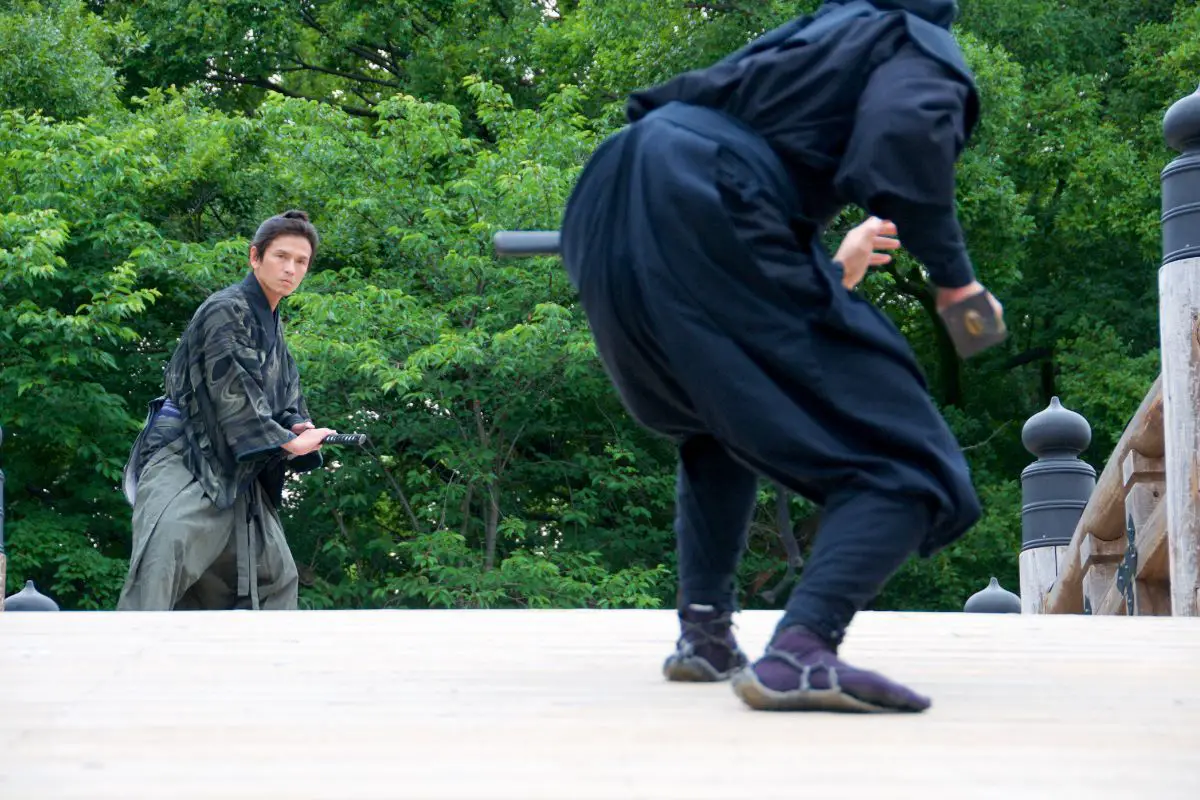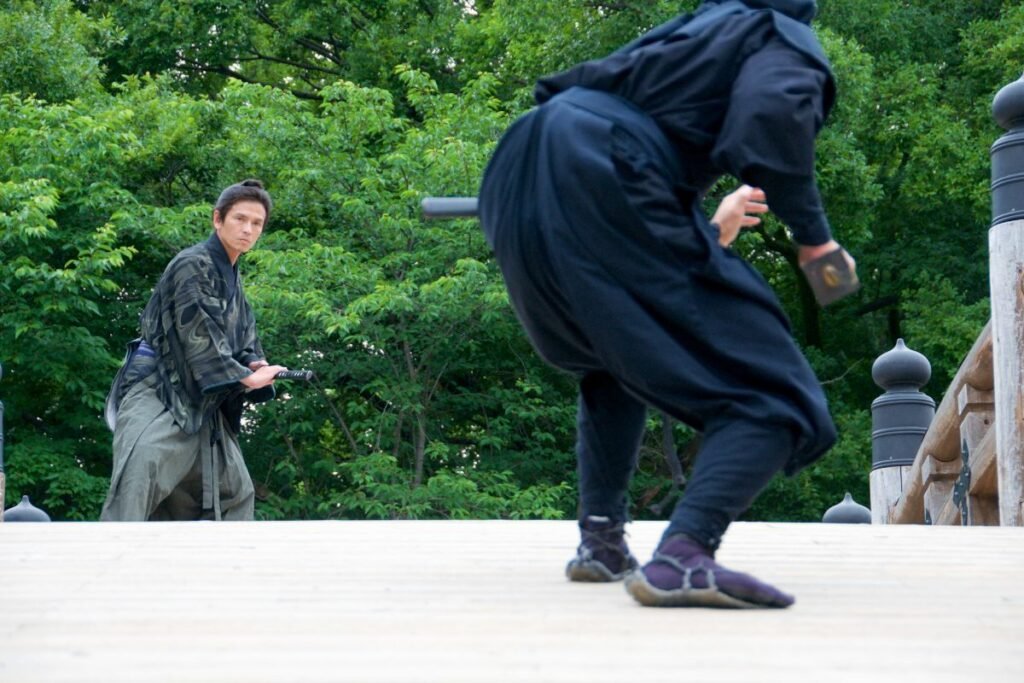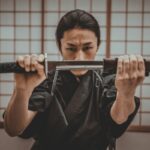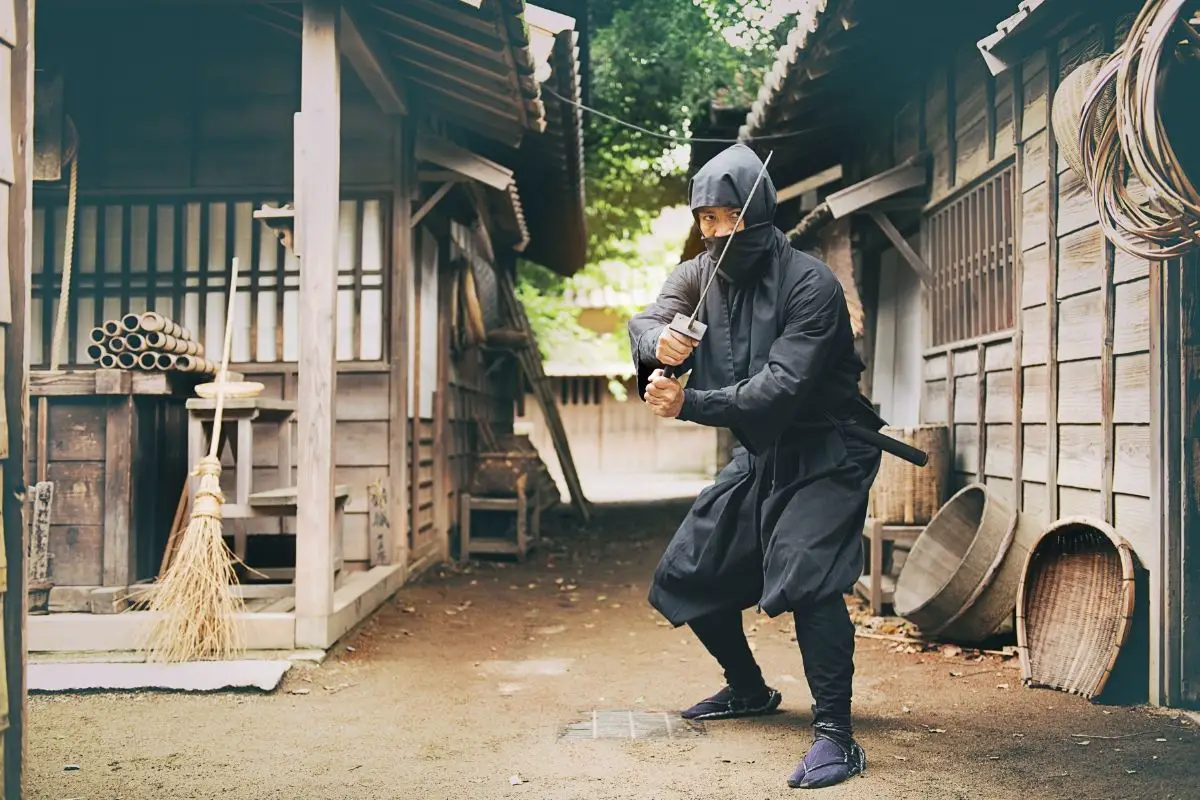Within contemporary and traditional media, there are few images as striking as that of the ninja and the samurai – both of which became not only synonymous with entire genres, but which went on to influence countless other creative endeavors too.

However, while the two are often mistakenly linked, they couldn’t be more different from one another – each possessing different origins, practices, and martial arts as their base.
But what exactly are the differences between the ninja and the samurai?
The History Of Ninjas & Samurai
To understand some of the differences between these two warrior classes, we first need to know a little more about their respective histories.
The Ninjas
Also known as the Shinobi (‘one who sneaks’), the ninjas took their name from their skills, fighting styles, and methods of infiltration – all of which made them valuable and lethal agents throughout their time in feudal Japan.
Experts in covert operations, spying, guerilla warfare, and assassinations, the actual origins of the ninjas are disputed, littered with inaccuracies, and laden with folklore.
This is mainly due to the fact that they were often recruited from the lower classes, and as such, there was little interest expressed regarding their beginnings.
However, it is generally believed that they began operating sometime between the 13th and 15th centuries.
Prior to this time, the specific methods later used by the ninja were frowned upon, and it was only until this time that specific mention of the name ‘shinobi’ began to be used within writings.
The Samurai
Considered the hereditary military nobility, as well as what would be considered the modern day ‘officer caste’ of the military, the samurai were highly trained and noble warriors that served numerous purposes within the framework of the country.
Operating from the late 12th century, until their ultimate demise in the 1870s, the samurai were the paid protection for the Daimyo – the wealthy Japanese landowners – and as such were blessed with perks, special privileges, and all manner of prestigious tasks otherwise unheard of in military circles.
Trained in martial arts, clad in sophisticated armor, and usually depicted carrying two swords – a longer katana, and a shorter tanto – the samurai were granted the right of kiri-sute gomen, allowing them to legally kill anyone of the lower classes – or those beneath them by rank and status.
What Are The Differences?
As you might imagine, despite coming from the same country, these two warrior classes have numerous differences that set them apart from one another.
Techniques
Firstly, both classes practiced different martial arts – styles that couldn’t have been more different from one another in practice.
The ninjas were primarily versed in ninjutsu – a collective term composed of numerous sub-styles – which was focused around efficiency, lethality, and simplicity, and which was tied into their wider skills of espionage, infiltration, and guerilla warfare.
On the other hand, the samurai were also versed in numerous martial arts, although their governing belief system of honor and discipline meant that they were much more focused on up-front, physical combat -more akin to traditionally depicted martial arts.
These included Jiu Jitsu, Kenjutsu (sword fighting), as well as numerous other styles.
As such, while the ninja’s objective was stealth and speed, the samurai engaged in open, honorable combat – placing them at opposing ends of the scale.
Class

Both also had very different origins.
The ninjas were often recruited from lower class families – something that added to their faceless, nameless, secretive approach. This not only helped them disappear and reappear with little to no notice, but also meant they were expendable.
Conversely, the samurai were military nobility, and came from wealthy, generational families who themselves formed powerful dynasties. As such, ideals of honor, morality, and bravery were more widely cherished amongst the samurai.
Purpose
The purpose of both warrior classes also couldn’t have been more different.
Firstly, the ninjas were considered silent killers, spies, and mercenaries – engaging in all manner of cloak and dagger scenarios that couldn’t have been further from the samurai code.
In the case of the samurai, they were seen as noble protectors of their prefectures and houses – and as such prided themselves on their conduct, their public personas, and their legacies.
Image
The ninjas were nameless and faceless warriors who hid in the shadows – usually covering their faces and bodies with dark materials to help them disappear and be unmemorable.
Alternatively, the samurai were public figures, who adorned themselves with often expensive, antique armor, and who often left their faces exposed – thus meeting the honorable belief system that they upheld.
While samurai did cover their faces, this was usually done ceremoniously, as a means of showing prowess and intimidation, or to honor past family members, the Gods, and various revered spirits and demons.
Final Thoughts
It is certainly true that the image of both the ninja and the samurai have captivated the minds and imaginations of people for countless years – with the 20th century in particular seeing numerous depictions across all forms of media.
However, as this article shows, the two types of warriors couldn’t in fact be more different from each other.
Frequently Asked Questions
Now that we know a little more about both ninjas and samurai warriors, and the differences therein, it is now time to answer some frequently asked questions that you might be interested in.
While the martial art of ninjutsu can still be learned in modern times, the ninjas do not play anywhere near as active a role as they once did during their heyday. This is due to the fact that warfare and politics have changed so much that their presence is no longer required.
While the ninjas famously learned ninjutsu, and the samurai were versed in all manner of techniques – including Jiu Jitsu and Kenjutsu (to name a few) – it really is difficult to compare the two.









